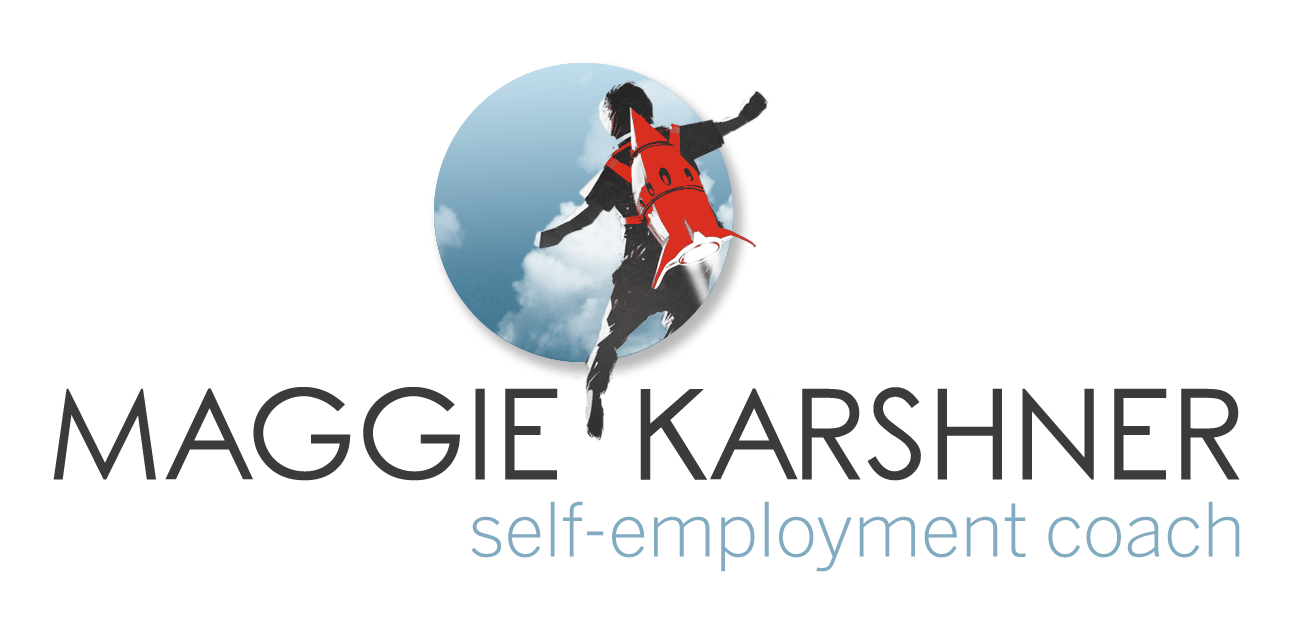Is Your Business Model Rock-solid? Craft it Effortlessly with this Simple Worksheet!
/When considering launching a business most folks know they need a business license. Many may wonder if they need a business plan. And few will consider their business model. Formal business plans are excessive for most self-employed businesses. But every business has a business model whether you're aware of it or not. Becoming aware of that model helps clarify your business.
Here I'm going to demystify what a business, and more specifically a business model is. "Business" at its simplest is an exchange of goods or services for currency. A *business model* describes some key features of how that transaction happens. Those key features include what you're selling, who consumes it, who pays for it, and how they buy and receive it. Let's dig into each of these a little further.
What are you selling?
This is the first question I want to understand during my initial consultation session with a new client. I want to know what you're trying to sell. I know this seems basic, but we can't skip over the basics when explaining our business to others.
Here's what I mean. You could say a nail salon sells nail polish. I'm pretty sure they'd happily sell you a bottle and you could argue you are buying some small amount of nail polish when you get a manicure. But that's not what the nail salon sells. It sells the services of manicures.
A business that describes itself as a "wellness center" could be a myriad of things. I've come across ones that provide any or all or only one of the following: exercise machines, yoga classes, massages, aesthetician services, manicures and pedicures, hot tubs, saunas, mental health therapy, meditation classes.
These two examples illustrate that what your business sells is within a cultural context. If we have a cultural understanding of what your business sells (like the nail salon) then describing what the business sells is implied in the name. If a solid cultural understanding is still being formed (like a wellness center), then you'll need to be more descriptive.
Who consumes it? and Who pays for it?
For plenty of businesses, this is one-in-the-same, but there are just as many businesses where this isn't the case. For example, children's toys are "consumed" by kids, but paid for by adults, often their parents. Assisted Living Facilities are used by the residents, but the adult children of those residents often have a lot of influence, if not financial control, over that decision. This also crops up in wholesale and white labels products. If your business produces either of these, then you never directly interact with the end customer. All your interactions are with the businesses that resell the product or software.
For businesses where the consumer and purchaser are the same, we need to understand your ideal client and how the product/service addresses their need(s.) What parts of it do they really like, and what parts could they do without? For businesses that have distinct consumers and purchasers, this work needs to be done separately. Focus on the ideal consumer, their needs and wants, and then separately investigate the ideal purchases and their needs and wants. They might have some similarities but there will also be differences. (This always makes me think of the Kix cereal ads from the '90s: "Kid tested, mother approved!" One's the consumer, the other is the purchaser and they're highlighting how this product benefits both of them!)
If you offer a variety of products or services there may be distinctions between your ideal client for different services. I think of the ideal client as being the same for the business, and each product or service focuses on a subset of that group or the ideal client in a particular circumstance. If an offering is an exclusive program or only marketed to some people as part of a larger mailing list, then your customer would be a narrow subset of your ideal client.
How do they buy and receive it?
This may seem basic or it may feel complicated. In my business, folks schedule, pay, and then meet with me on Zoom to receive the service. In a brick-and-mortar store, this is the part where the customer hands over their credit card and the salesperson hands them the product.
When the pandemic hit, that brick-and-mortar store pivoted to online sales. Now the client enters their credit card into an online website, the product is shipped, and the salesperson might be out of a job. That's a very different process! There needs to be a completely different interface: a website instead of a cash register. It takes longer for the product to land in the consumer's hands. Packaging supplies are different, as are staffing needs. If the customer would rather pay in cash that's no longer an option. These are the differences we're talking about in a business model. For a budding business, this also forms a vital To-Do List of systems to get into place before the business can start.
Customers appreciate it when a business is clear on what payment and delivery methods are available. For example, therapists in private practice have a variety of payment or delivery methods they can offer. They could accept only payment direct from the client, or they could accept insurance. The customer needs to know this ahead of time, and the business owner needs to know what infrastructure they need to accept those payments. Therapists can also offer telehealth or in-person sessions, or a mixture of both. Customers might have a preference so they'd like to know in advance of making contact with a potential therapist.
Receiving payment and delivering the product or service are key functions of a business. The decisions around these define the shape of your business. This shape can change over time and will be influenced by current events and culture. As evidenced by the fact telehealth wasn't really a thing pre-2020 and could possibly not be covered by insurance in the future. Your business model may be required to shift over time, but we operate any business from a particular business model in the now.
For some businesses, the delivery of their product or service might be a differentiator that gives them an edge in the market. This is what Uber and Lyft brought to the world of taxis. Novel payment or delivery methods frequently do not apply to self-employed businesses, so don't think you have to innovate in this arena. And if you *do* innovate, you're going to have to clearly communicate how this new system works.
Codifying Your Business Model
Once you've got these five things figured out (what you're selling, who consumes it, who pays for it, how they buy it, and how they receive it) for each of your products or services, then you're clear on your business model. This can be a lot to keep organized, especially if your list of offerings is long. I've made a worksheet to help you organize your business model. Feel free to download and use it via PDF or Google Doc. I've also come up with some examples if you want to see how typical businesses operate (I put myself in there too, so you can also spy on my business model!)




